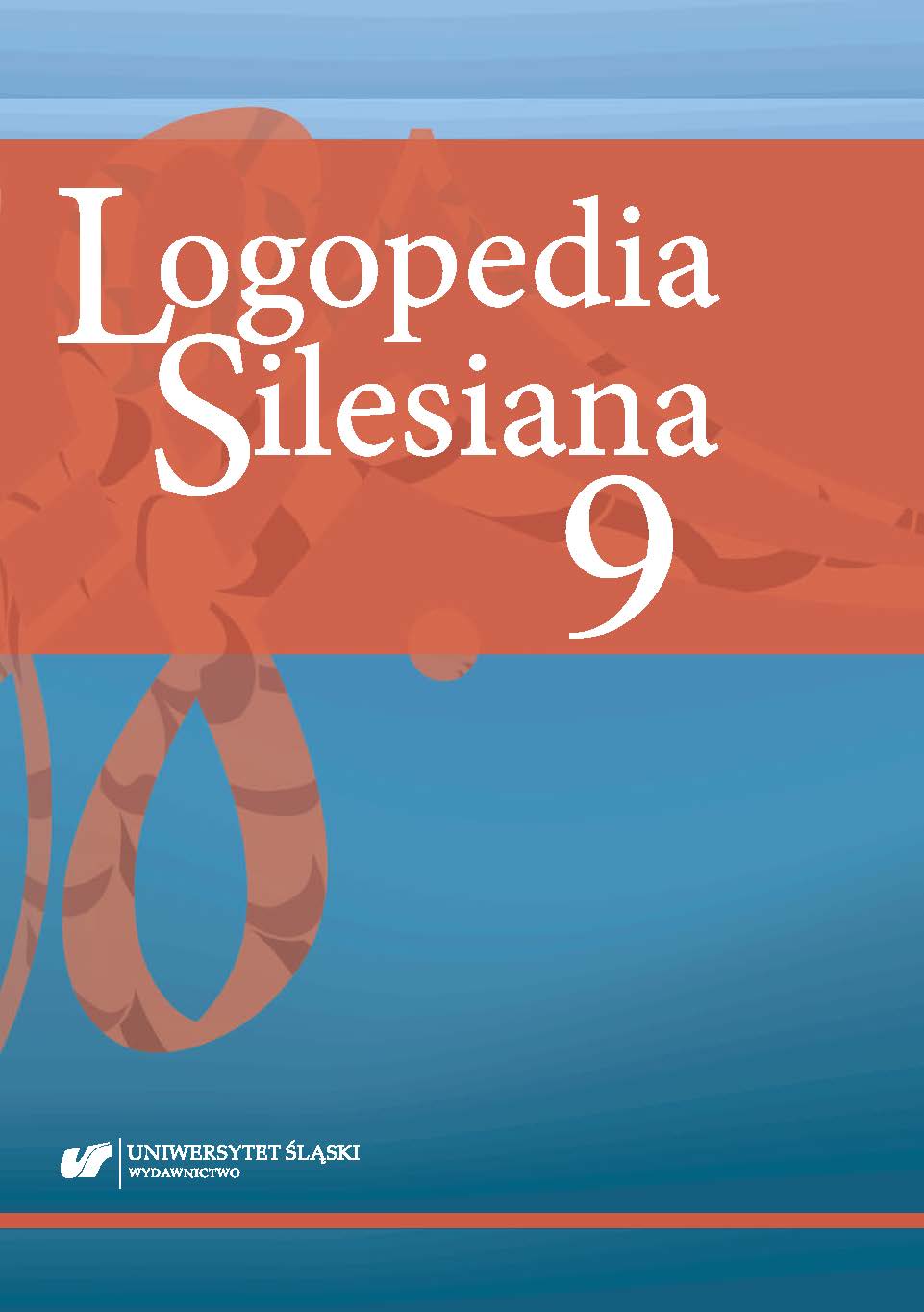Amaizu, N., Shulman, R.J., Schanler, R.J., Lau, C. (2008). Maturation of oral feeding skills in preterm infants. Acta Paediatrica, 97(1), 61–67. https://doi.org/10.1111/j.1651-2227.2007.00548.x.
Google Scholar
Barlow, S.M., Finan, D.S., Lee, J., Chu, A.S. (2008). Synthetic orocutaneous stimulation entrains preterm infants with feeding difficulties to suck. Journal of Perinatology, 28(8), 541–548. https://doi.org/10.1038/jp.2008.57.
Google Scholar
Barlow, S.M. (2009). Oral and respiratory control for preterm feeding. Current Opinion in Otolaryngology & Head and Neck Surgery, 17(3), 179–186. https://doi.org/10.1097/MOO.0b013e32832b36fe.
Google Scholar
Bieleninik, L., Ghetti, C., Gold, C. (2016). Music therapy for preterm infants and their parents: A meta-analysis. Pediatrics, 138(3), e20160971–e20160971. https://doi.org/10.1542/peds.2016-0971.
Google Scholar
Clark, L., Kennedy, G., Pring, T., Hird, M., (2007). Improving bottle feeding in preterm infants: Investigating the elevated side-lying position. Infant, 3(4), 154–158. http://www.infantjournal.co.uk/pdf/inf_016_ife.pdf [дата обращения: 7.05.2020].
Google Scholar
Dalgleish, S.R., Kostecky, L.L, Blachly, N. (2016). Eating in “SINC”: Safe individualized nipple-feeding competence, a quality improvement project to explore infant-driven oral feeding for very premature infants requiring noninvasive respiratory support. Neonatal Network, 35(4), 217–227. https://doi.org/10.1891/0730-0832.35.4.217.
Google Scholar
Dumpa, V., Kamity, R., Ferrara, L., Akerman, M., Hanna, N. (2020). The effects of oral feeding while on nasal continuous positive airway pressure (NCPAP) in preterm infants. Journal of Perinatology, 40(6). https://doi.org/10.1038/s41372-020-0632-2.
Google Scholar
Ehrenkranz, R.A., et al. (2006). Growth in the neonatal intensive care unit influences neurodevelopmental and growth outcomes of extremely low birth weight infants. Pediatrics, 117(4), 1253–1261. https://doi.org/10.1542/peds.2005-1368.
Google Scholar
Ferrara, L., et al. (2017). Effect of nasal continuous positive airway pressure on the pharyngeal swallow in neonates. Journal of Perinatology, 37(4), 398–403. https://doi.org/10.1038/jp.2016.229.
Google Scholar
Gewolb, I.H., Bosnia, J.F., Reynolds, E.W., Vice, F.L. (2007). Integration of suck and swallow rhythms during feeding in preterm infants with and without bronchopulmonary dysplasia. Developmental Medicine Child Neurology, 45(5), 344–348. https://doi.org/10.1111/j.1469-8749.2003.tb00406.x.
Google Scholar
Hanin, M., Nuthakki, S., Malkar, M.B., Jadcherla, S.R. (2015). Safety and efficacy of oral feeding in infants with BPD on nasal CPAP. Dysphagia, 30(2), 121–127. https://doi.org/10.1007/s00455-014-9586-x.
Google Scholar
Hasenstab, K.A., Jadcherla, S.R. (2014). Respiratory events in infants presenting with apparent life threatening events: Is there an explanation from esophageal motility? The Journal of Pediatrics, 165(2), 250–255.e1. https://doi.org/10.1016/j.jpeds.2014.02.003.
Google Scholar
Hensch, T.K. (2004). Critical period regulation. Annual Review of Neuroscience, 27(1), 549–579. https://doi.org/10.1146/annurev.neuro.27.070203.144327.
Google Scholar
Kao, H.-M., Lin, Ch.-H., Chang, Y.-J. (2010). Feeding with cross-cut teats has better sucking effects and oxygenation in preterm infants with chronic lung disease. Journal of Clinical Nursing, 19(21–22), 3016–3022. https://doi.org/10.1111/j.1365-2702.2010.03290.x. ISSN 0962-1067.
Google Scholar
LaTuga, M.S., et al., (2019). Clinical characteristics of premature infants who orally feed on continuous positive airway pressure. Early Human Development, 139, 104–833. https://doi.org/10.1016/j.earlhumdev.2019.104833.
Google Scholar
Lau, Ch. (2005). Oral feeding in the preterm infant. NeoReviews, 7(1), e19–e27. https://doi.org/10.1542/neo.7-1-e19.
Google Scholar
Lau, Ch. (2015). Development of suck and swallow mechanisms in infants. Annals of Nutrition and Metabolism, 66(Suppl. 5), 7–14. https://doi.org/10.1159/000381361. ISSN 0250-6807.
Google Scholar
Marcus, Sh., Breton, B. (2019). Infant and child feeding and swallowing: occupational therapy assessment and intervention. North Bethesda: AOTA Press.
Google Scholar
McFarland, D., Tremblay, P. (2006). Clinical implications of cross-system interactions. Seminars in Speech and Language, 27(4), 300–309. https://doi.org/10.1055/s-2006-955119.
Google Scholar
Miller, M.J., Kiatchoosakun, P. (2004). Relationship between respiratory control and feeding in the developing infant. Seminars in Neonatology, 9(3), 221–227. https://doi.org/10.1016/j.siny.2003.11.006.
Google Scholar
Mizuno, K., et al. (2007). Infants with bronchopulmonary dysplasia suckle with weak pressures to maintain breathing during feeding. Pediatrics, 120(4), e1035–e1042. https://doi.org/10.1542/peds.2006-3567.
Google Scholar
Nasef, N., et al. (2015). High-flow nasal cannulae are associated with increased diaphragm activation compared with nasal continuous positive airway pressure in preterm infants. Acta Paediatrica, 104(8), e337–e343. https://doi.org/10.1111/apa.12998.
Google Scholar
Pados, B.F., et al. (2016). Effects of milk flow on the physiological and behavioural responses to feeding in an infant with hypoplastic left heart syndrome. Cardiology in the Young, 27(1), 139–153. https://doi.org/10.1017/S1047951116000251.
Google Scholar
Penn, A.A., Shatz, C.J. (1999). Brain waves and brain wiring: The role of endogenous and sensory-driven neural activity in development. Pediatric Research, 45(4, Part 1 of 2), 447–458. https://doi.org/10.1203/00006450-199904010-00001.
Google Scholar
Ross, E., Fuhrman, L. (2015). Supporting oral feeding skills through bottle selection. Perspectives on Swallowing and Swallowing Disorders (Dysphagia), 24(2), 50–57. https://doi.org/10.1044/sasd24.2.50.
Google Scholar
Ross, E.S., Philbin, M.K. (2011). Supporting oral feeding in fragile infants. The Journal of Perinatal & Neonatal Nursing, 25(4), 349–357. https://doi.org/10.1097/JPN.0b013e318234ac7a.
Google Scholar
Singer, L., et al. (1992). Oxygen desaturation complicates feeding in infants with bronchopulmonary dysplasia after discharge. Pediatrics, 90 (3), 380–384. https://www.ncbi.nlm.nih.gov/pmc/articles/PMC4182863/ [дата обращения: 8.05.2020].
Google Scholar
Song, D., et al. (2019). Patterned frequency-modulated oral stimulation in preterm infants: A multicenter randomized controlled trial. PLoS ONE, 14(2). https://doi.org/10.1371/journal.pone.0212675.
Google Scholar
Taha, D.K., et al. (2016). High flow nasal cannula use is associated with increased morbidity and length of hospitalization in extremely low birth weight infants. The Journal of Pediatrics, 173, 50–55.e1. https://doi.org/0.1016/j.jpeds.2016.02.051.
Google Scholar
Thoyre, S.M., et al. (2012). Coregulated Approach to feeding preterm infants with lung disease: Effects during feeding. Nursing Research, 61(4), 242–251. https://doi.org/10.1097/NNR.0b013e31824b02ad.
Google Scholar
Vice, F.L., Gewolb, I.H. (2008). Respiratory patterns and strategies during feeding in preterm infants. Developmental Medicine & Child Neurology, 50(6), 467–472. https://doi.org/10.1111/j.1469-8749.2008.02065.x.
Google Scholar
Wolf, L.S., Glass, R.P. (1992). Feeding and swallowing disorders in infancy: assessment and management (2nd ed.). Tucson: Therapy Skill Builders, Austin, Hammill Institute on Disabilities.
Google Scholar
Zimmerman, E., Barlow, S.M. (2008). Pacifier stiffness alters the dynamics of the suck central pattern generator. Journal of Neonatal Nursing, 14(3), 79–86. https://doi.org/10.1016/j.jnn.2007.12.013.
Google Scholar


 https://doi.org/10.31261/LOGOPEDIASILESIANA.2020.09.22
https://doi.org/10.31261/LOGOPEDIASILESIANA.2020.09.22

 10.31261/LOGOPEDIASILESIANA
10.31261/LOGOPEDIASILESIANA